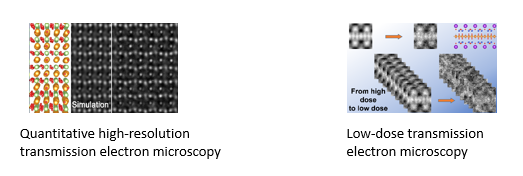K. Ran, F. Zeng, L. Jin, S. Baumann, W.A. Meulenberg, and J. Mayer. “in situ observation of reversible phase transitions in Gd-doped ceria driven by electron beam irradiation”. Nature Commun. 15, 8156 (2024). Link: https://www.nature.com/articles/s41467-024-52386-3
K.W. Urban, J. Barthel, L. Houben, C.L. Jia, L. Jin, M. Lentzen, S.B. Mi, A. Thust, and K. Tillmann. “Progress in atomic-resolution aberration corrected conventional transmission electron microscopy (CTEM)”. Prog. Mater. Sci. 133, 101037 (2023). Link: https://www.sciencedirect.com/science/article/pii/S0079642522001189
L. Jin, F. Zhang, F. Gunkel, X.K. Wei, Y.X. Zhang, D.W. Wang, J. Barthel, R.E. Dunin-Borkowski, and C.L. Jia. “Understanding structural incorporation of oxygen vacancies in perovskite cobaltite films for electrocatalysis”. Chem. Mater. 34, 10373-10381 (2022). Link: https://pubs.acs.org/doi/10.1021/acs.chemmater.2c02043
Z.H. Ge, W.J. Li, J. Feng, F. Zheng, C.L. Jia, D. Wu, and L. Jin. “Atomic-scale observation of off-centering rattlers in filled skutterudites”. Adv. Energy Mater. 12, 2103770 (2022). Link: https://onlinelibrary.wiley.com/doi/full/10.1002/aenm.202103770
S. You, P.-H. Lu, T. Schachinger, A. Kovács, R.E. Dunin-Borkowski, and A.M. Maiden. “Lorentz near-field electron ptychography”. Appl. Phys. Lett. 123, 192406 (2023). Link: https://pubs.aip.org/aip/apl/article/123/19/192406/2920259
F. Allars, P.-H. Lu, M. Kruth, R.E. Dunin-Borkowski, J.M. Rodenburg, and A.M. Maiden. “Efficient large field of view electron phase imaging using near-field electron ptychography with diffuser”. Ultramicroscopy 231, 113257 (2021). Link: https://www.sciencedirect.com/science/article/pii/S0304399121000498

